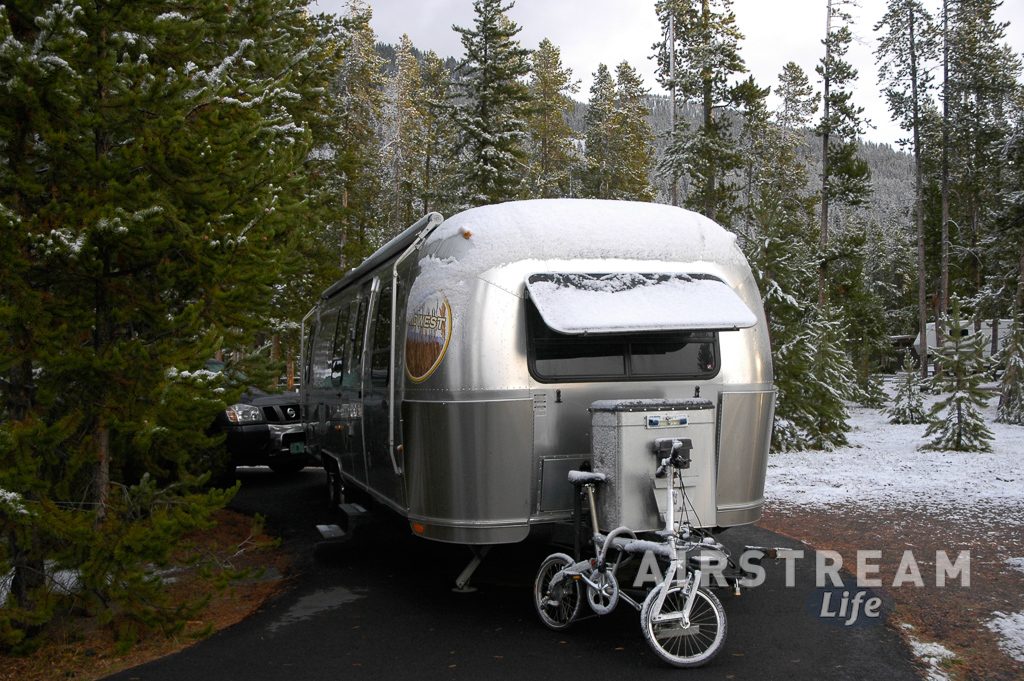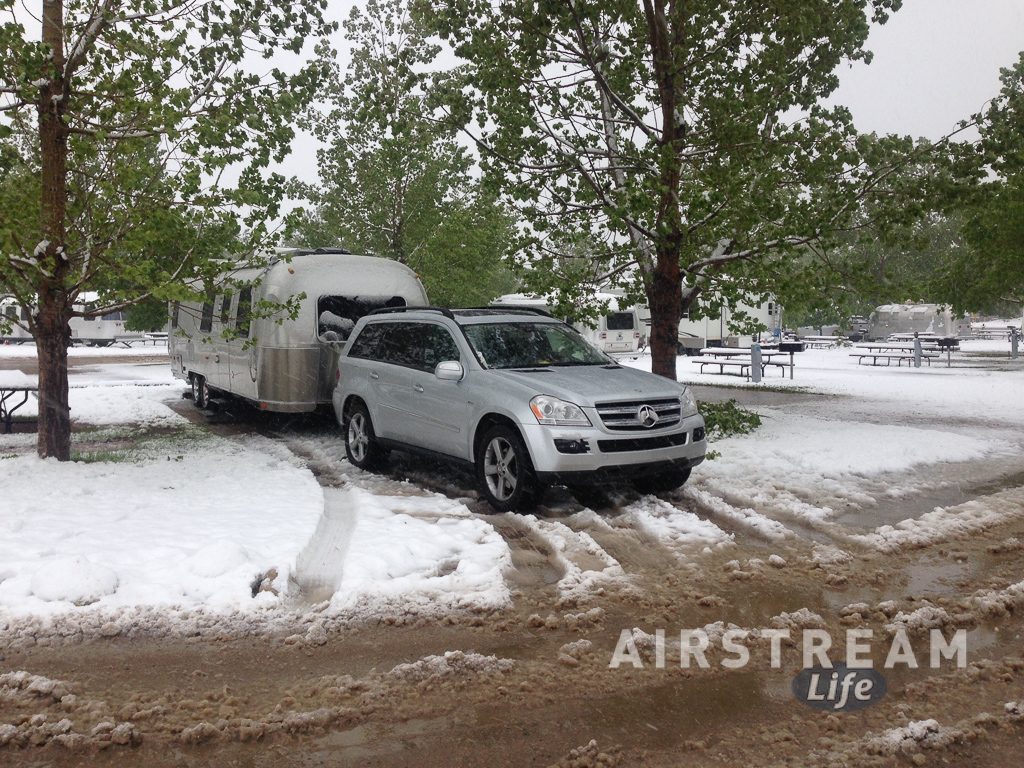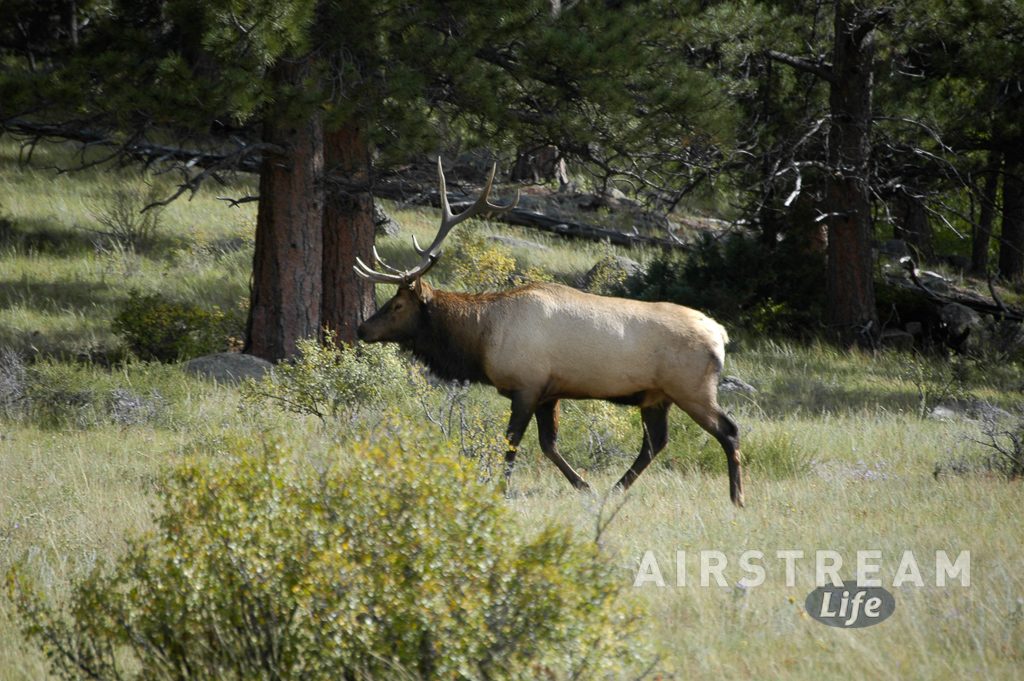It’s going to be 106 degrees in Tucson today, so it was quite refreshing to get this email this morning:
Hi Rich, My wife and I are headed to Rocky Mountain National Park next week and the forecast is for snow on one of our 4 days at the park and the nighttime lows are below freezing 3 out 4 of our nights. Do you think our 16’ Airstream will do ok in this unexpected cold? Any suggestions? Thank you. John

First of all, I’m envious. A little overnight snow in September sounds pretty good to us desert dwellers. And rest assured, you’ll be fine through the overnight freezes. Your Airstream is built for freezing temperatures and can easily handle temperatures in the 20s.
On most Airstreams the furnace has a little duct that spills some heated air down to the holding tanks, so they don’t freeze. On other Airstreams, there’s an electric heating pad for the tanks. The fresh water plumbing is all contained inside the body of the trailer, so it will be fine as long as there’s heat inside. Basically, if you’re comfortable, the plumbing is too.
If you have a water hookup and a typical vinyl hose, you should disconnect it at night and let it drain. Those hoses can fail if they are allowed to freeze. (If you have our Ultimate Water Hose you don’t have to worry because it won’t be harmed by freezing.)
In extreme temperatures, like close to zero, you may find the dump valves frozen in the morning. This is rare but if it happens you should not attempt to force them. Wait until temperatures rise before trying to move the valves, or you’ll damage the seals and they’ll leak.
I usually set the nighttime temperature at 62. This is my personal balance between propane conservation and comfort. With a few blankets on the bed (or a warm partner, or a dog) it’s very comfortable. Still, with nighttime lows just below freezing and daytime highs in the 50s or 60s you should expect to use up a 30-pound propane tank in 4-5 nights. For an extended trip you’ll want to know where propane refills can be found. Also keep in mind that on exceptionally cold or windy night the furnace will run a lot more than usual.
The real challenge is electricity. Having an electric hookup is the best option by far. But if you’re in a national park campground there may not be an option to plug in. This makes things very tough in the winter. The furnace alone chews up between 7 and 10 DC amps when it runs, mostly to power the blower. In a very cold night the furnace can cycle on and off every few minutes, consuming 25-40 DC amp-hours by breakfast. Add to that your normal daily electrical usage and (assuming your Airstream has the factory-spec batteries) you’ll be out of power in 24 hours.
While I’m a fan of solar panels, in the winter the sun-gathering opportunity is much less due to low sun angle and cloudiness. Solar still works but it might not be enough if you aren’t conserving power very carefully. In this case, a catalytic heater may be a good option to consider since it doesn’t consume electricity.
Another option is to add more battery capacity. There are several ways to do this, and the best solution depends on the layout of your Airstream. Usually people find a spot toward the front of the trailer (such as under a couch or in an external storage compartment) to install a bigger battery bank. At the same time it’s an opportunity to upgrade to Absorbed Glass Mat batteries, which last longer and are safer.
Otherwise, a generator is probably going to be needed after a day or two of winter boondocking. It will work, but I’m not a big fan of generators for battery recharging. You can read more about that here.

The other thing I think about when going into a winter situation is whether there might be significant snow accumulation that makes driving difficult. Most of us don’t have winter tires on our tow vehicles and many of us don’t have four-wheel drive, so with the added weight of a trailer, getting stuck is a real risk. Even getting in and out of a slushy campground, like the one pictured above in Fort Collins CO can be tough. (Fortunately that vehicle had All-Wheel Drive.)
Towing down a mountain road with snow on the road is a formula for disaster if you aren’t very careful. You’ll want to be confident that your trailer brakes are dialed in so that they don’t over-brake or under-brake, and in any case keep your speed down. When in doubt, wait it out. A couple of hours of sunshine can make a huge difference on the roads.

Otherwise, most of my preparation for a winter camping trip is to bring gear that makes it fun. I like to do a little cooking with the Dutch Oven after dark, so I bring all that gear plus plenty of warm clothes for myself.

Perhaps since you are planning to go to Rocky Mountain National Park in September, you are hoping to spot some elk. It’s the perfect time to go. Definitely bring some good binoculars (or a long telephoto lens for your camera).
Late-season and winter camping can be awesome, and your Airstream makes it possible. Don’t fear the cold—just prepare, and you’ll have a great time.